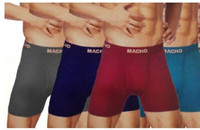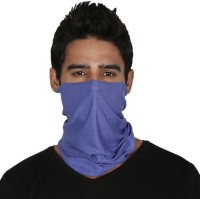How To Choose The Best Plastic Shoes For Monsoon That Will Not Slip: The Perfect Rainy Day Wear
Rainy days can be charming, no doubt, chai in one hand, bhajiyas on the plate, and raindrops drumming a soothing tune on the windowpane. This is how to choose the best plastic shoes that don't betray you when the skies open up.
Best Plastic Shoes For Monsoon: How To Choose Anti-Slip Rainy Day Footwear.
Every monsoon brings with it the promise of cool winds, washed streets, and nature in full bloom. But it also brings its fair share of chaos, waterlogged roads, surprise potholes, and the age-old enemy: slippery shoes. Whether it's the walk to work, the dash for an auto, or hopping through puddles to buy sabzi, your footwear must hold its ground. That's where plastic shoes come in.
Yes, plastic! Often underestimated and brushed aside for their cousin, the ‘stylish-but-useless-in-the-rain' leather or canvas kind. But plastic shoes, when chosen right, are a godsend during the monsoon. They're washable, waterproof, and, with the right sole, grip like a dream. So, if you are looking for non-slip footwear, here is how to choose the best plastic shoes for Monsoon. Let's walk through what makes the perfect monsoon companion for your feet.

Best Plastic Shoes For Monsoon: How To Choose Anti-Slip Rainy Day Footwear; Photo Credit: Pexels
1. Prioritise Anti-Slip Soles: Because Falling Isn't Fashionable
A fall in the rain isn't just embarrassing; it can be downright painful. The number one feature to check before picking a plastic shoe for the monsoon? The sole. A well-designed, textured sole is your best defence against slippery pavements and wet tiles.
Look for soles made of thermoplastic rubber (TPR) or PVC with deep grooves or patterns. These textures increase friction and reduce the chances of skidding. Flat, smooth soles might look sleek, but on a rainy footpath, they'll betray you faster than you can say ‘pav bhaji'.
Test the grip by pressing the sole against a slick surface, like a tile or polished floor. If it slides easily, put it back. Your shoes need to stand their ground, literally.
2. Pick the Right Fit: Loose Shoes Invite Trouble
Rain doesn't mix well with ill-fitting shoes. A size too loose and your feet start doing the tango inside, especially when wet. Too tight, and you're left with sore toes, blisters, and the urge to never walk again.
Plastic shoes, unlike fabric or leather, don't stretch much. So it's crucial to get the size spot on. Try them with socks if that's how you'll usually wear them. Your feet should feel secure, but not squished. Walk around a bit in the store, if your heel lifts or toes feel cramped, it's not the one.
Monsoon often means walking through puddles, hopping over mud, and maybe even running to catch a rickshaw. The right fit ensures your feet stay comfortable and your balance stays intact.
3. Look for Quick-Dry and Easy-to-Clean Designs
Rain brings mess, slush, mud, and the mystery gunk that splashes up when vehicles zoom by. That's why your monsoon shoes must be quick to dry and easy to clean.
Choose shoes made entirely of water-resistant plastic, without unnecessary fabric or foam linings. These trap moisture and become breeding grounds for odour and bacteria. Shoes like jelly flats, croc-style clogs, or PVC sandals can be rinsed and dried in minutes.
A quick rinse under the tap, a swipe with an old toothbrush, and they're as good as new. Great if you're rushing out the door again the next day. Because let's face it, no one has the time (or the patience) to baby their shoes every time it drizzles.
Also Read: Best Trekking Shoes For Monsoon In India: What To Look For Before You Buy
4. Closed-Toe or Open-Toe? Choose Based on Need
This one's tricky and depends on how much you're braving the outdoors. Closed-toe shoes, like plastic loafers or croc-style clogs, protect your feet from the splashes and keep the muck out. They're ideal for commuting, walking in crowded streets, or visiting muddy markets.
But if your day's mostly indoors, or your route is clean and covered, an open-toe design can feel airy and fresh. Think strappy sandals or jelly flats. They let your feet breathe and reduce the risk of fungal infections, a common monsoon woe.
Just steer clear of anything that lets your foot slide out too easily. And if you're hopping across puddles or manoeuvring flooded roads, those open toes will soak up more than you bargained for.
5. Check for Cushioning and Arch Support
Let's be honest, plastic shoes don't have the best rep when it comes to comfort. But times have changed, and many modern plastic designs now come with decent cushioning and arch support.
If your daily routine involves long walks or standing for hours, this feature is non-negotiable. Thin-soled plastic shoes might be lightweight, but they don't absorb shock well. And with wet roads, your feet need all the protection they can get.
Pick shoes with moulded insoles or slight padding. Some brands offer ergonomic footbeds even in their waterproof collections. Sure, they might cost a bit more, ₹800 to ₹1500, but your feet (and spine) will thank you later.
6. Avoid Slippery Inner Surfaces
It's not just the outer sole that needs grip, the inside matters too. Ever worn a shoe where your foot keeps sliding forward with every step in the rain? That's because the inner surface is too smooth, especially when wet.
Look for shoes with textured or slightly cushioned insides. Some even have tiny ridges or a matte finish to hold your foot in place. If your foot stays steady, your walk stays steady.
Bonus tip: if your current pair slides too much inside, sprinkle a bit of baby powder or wear no-show grip socks. It's an old-school hack, but it works wonders.

Best Plastic Shoes For Monsoon: How To Choose Anti-Slip Rainy Day Footwear; Photo Credit: Pexels
7. Say No to Fancy Embellishments
Metal chains, faux fur, glitter, or fabric flowers might look pretty in the shop, but come the first downpour and they're a mess. Monsoon is not the time for frills. Those extras collect dirt, soak up water, and are near impossible to clean.
Stick to minimal, sleek designs, think solid colours or subtle prints. Shoes that serve function and style. A basic black or navy jelly flat can go with office wear. A bright yellow croc-style clog adds cheer to a gloomy day. Who said monsoon fashion can't be fun and practical?
8. Choose Lightweight Over Bulky
When you're already trudging through waterlogged streets, the last thing you want is to drag your feet, literally. Heavy footwear might feel sturdy, but they'll weigh you down when wet.
Go for lightweight plastic shoes that don't absorb water or retain mud. Foam-based plastics or EVA materials are feather-light and quick to dry. They're easy to slip into a bag if you switch into formal shoes at work, or toss into your scooty's storage after a ride.
Lightweight also means less fatigue. You'll barely feel them on your feet, and that's the dream when navigating city traffic in a downpour.
9. Don't Skip the Trial: Rain-Test if Possible
It might sound odd, but testing shoes for monsoon performance isn't just about walking around the shop. Some brands now offer waterproof trial zones, a little patch of wet flooring where you can test grip.
If you're buying online, check for video reviews. Look for shoppers demonstrating flexibility, grip, and how the shoes perform under running water. And always try your shoes at home on a tile floor before cutting off the tag, just in case a return is needed.
After all, rainy-day shoes are a commitment. A little testing upfront saves a lot of slipping later.
10. Budget Smart, But Don't Compromise on Quality
Plastic shoes come in all price ranges, from ₹200 roadside pairs to branded options costing over ₹2000. The trick is to strike a balance. Don't be swayed by dirt-cheap deals; they often come with poor grip, flimsy material, or uncomfortable fits.
Aim for quality within your budget. A decent pair in the ₹700–₹1200 range usually offers durability, safety, and comfort. Consider it an investment, in dry feet, fewer stumbles, and stress-free walks through the rain.
A good monsoon pair lasts more than one season if taken care of. And with so many stylish waterproof options available now, practicality doesn't mean giving up on personality.
Products Related To This Article
1. RED TAPE Clogs For Men
2. SINAL Lightweight Gum Boots Standard Steel Safety Shoes Size - 8 Boots For Men
3. AJANTA Waterproof & Anti-skid Loafers For Men
4. Footup Men Slippers
5. action Men Slippers
Monsoon can be magical, but only if your feet are happy. Choosing the right plastic shoes is about more than just avoiding puddles; it's about moving with ease, staying safe, and maybe even enjoying the rain without worry.
Gone are the days when ‘plastic shoes' meant stiff, clunky embarrassments. Today's designs are thoughtful, trendy, and ready for the splash. So next time the clouds rumble and umbrellas go up, walk tall, walk dry, and most importantly, don't slip. After all, chai tastes better when you've arrived safely. Shop now on Flipkart.













